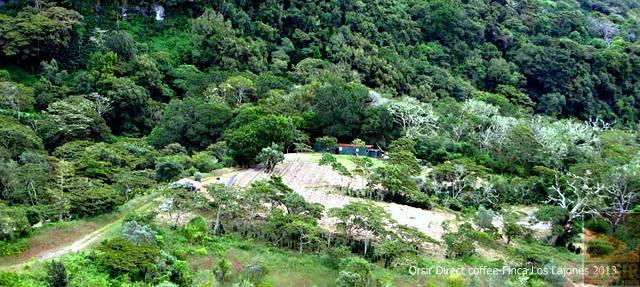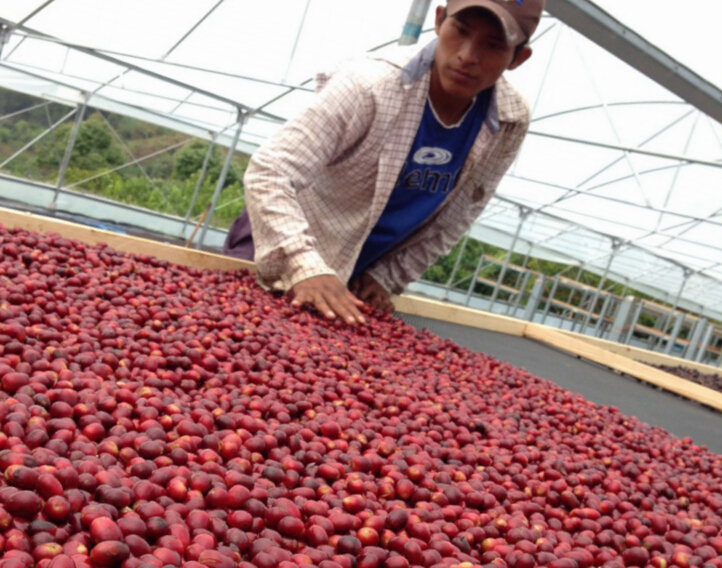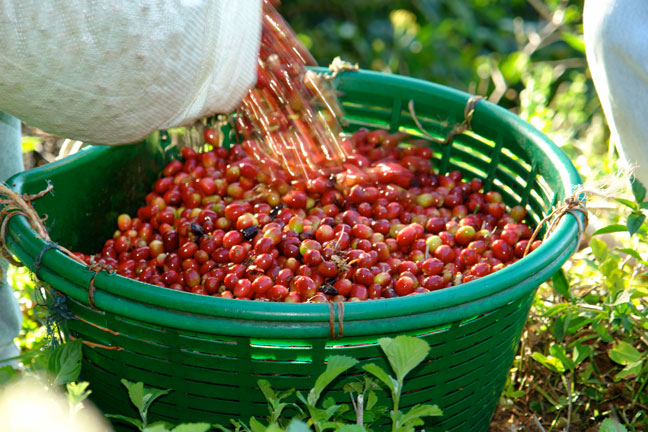Coffee Bean selection course Coffee Bean Brand species Guide Solar treatment Class its Maggie Bench Majie
With the deepening of people's contact with coffee, ordinary taste can no longer meet people's needs. As a result, more and more coffee lovers will buy their own beans and go home from the beginning of grinding, blending their favorite coffee flavor step by step. Coffee beans vary in size, new and old quality, how to choose their favorite and cost-effective coffee beans?
Methods / steps
Size and taste
There is a difference in taste between large coffee beans and small coffee beans. For the same kind of coffee, the bigger the bean, the higher the grade, the smaller the bean, the lower the grade, and the cheaper it is. Of course, there are differences in taste. The bigger the beans, the stronger the coffee. However, in addition to high-grade products, the classification of other coffee is not very strict, for example, the central grade beans can account for 60%. Then beans one level higher than this level and beans at a lower level will each account for 20% at the same time. Therefore, sometimes it is roasted according to the standard of the marked central grade, and the other 40% of the coffee cannot be roasted under the best conditions.
New and old and preservation time
Judging the new and old beans in coffee beans as well as the time to market can help to judge the freshness of coffee. The taste of new coffee beans and old coffee beans roasted in the same variety and the same degree will be significantly different, of course, the new beans are more fragrant, the reason is very simple, the freshness of coffee beans will directly affect the roasting and extraction of coffee. Although the moisture of the new bean will be greatly lost and the color will turn white after several years of preservation, the flavor will not be greatly affected, so it is more advantageous to choose the new bean when the specific production date of the coffee bean is unknown.
Country: Ethiopia
Grade: G3
Production area: Banchi Magi primeval forest
Altitude: 1500-1700 m
Treatment: insolation
Varieties: Typica, Heirloom
Producers: centralized treatment of small farmers' harvest
Flavor: jackfruit, spices, wine
There are eight main producing areas of Ethiopian coffee: Ekempti, Limu, Illubabor,
Djimma 、 Harrar 、 Teppi/Bebeka 、 Sidamo 、 Yirgacheffe .
Ethiopian coffee is highly rated in Taiwan, especially the three well-known producing areas of Ethiopia, namely Harrar, Sidamo and Yirgacheffe. Sidama province is located in the south of Ethiopia, Arsi province in the north, Bale province in the east and GamuGofa province in the west. The jurisdiction of Sidama province includes two well-known producing areas, Yirgacheffe and Kochere. The industry is dominated by agriculture, and the coffee growing area is located around the East African Great Rift Valley (GreatRiftValley). Banchi Magi producing area (BenchMaji) is located in southern Ethiopia, is the country's two largest primeval forest coffee (Forest), one is Banchimaji, the other is the coffee producing area of KafaFrost.
There are four types of coffee exported from Ethiopia: virgin forest coffee (forest), semi-virgin forest coffee (semi-forest), garden coffee (garden) and manor large area coffee (plantation).
Primeval forest coffee (forest) accounts for about 10 per cent of all coffee production and comes from southern and southwestern Ethiopia, such as (Bale,WestWolega,Bench-Maji,Keficho-Shekicho,MetuandJimma). Primeval forest coffee has a natural resistance to diseases and insect pests, organic and dry aroma top high-quality flavor.
Semi-primeval forest coffee (semi-forest) is coffee farmers in the primeval forest coffee trees have special care, there are pruning coffee trees and weeds, as well as shade trees pruning, fruit ripening, then harvested and sold, this type of coffee accounts for about 35% of the total output.

Important Notice :
前街咖啡 FrontStreet Coffee has moved to new addredd:
FrontStreet Coffee Address: 315,Donghua East Road,GuangZhou
Tel:020 38364473
- Prev

Coffee Bean Selection Tutorial Coffee Bean Brand Type Guide YJSF YCFCU Dama Cooperative G2
As people's exposure to coffee deepens, ordinary tasting can no longer meet people's needs. As a result, more and more coffee lovers will buy their own beans home, starting with grinding, step by step to blend their favorite coffee flavor. Coffee beans are big.
- Next

Coffee beans purchase tutorial Coffee Bean Brands Guide to the Sun Yega Xuefei Aduto adado Essel
With the deepening of people's contact with coffee, ordinary taste can no longer meet people's needs. As a result, more and more coffee lovers will buy their own beans and go home from the beginning of grinding, blending their favorite coffee flavor step by step. The size of coffee beans
Related
- Does Rose Summer choose Blue, Green or Red? Detailed explanation of Rose Summer Coffee plots and Classification in Panamanian Jade Manor
- What is the difference between the origin, producing area, processing plant, cooperative and manor of coffee beans?
- How fine does the espresso powder fit? how to grind the espresso?
- Sca coffee roasting degree color card coffee roasting degree 8 roasting color values what do you mean?
- The practice of lattes: how to make lattes at home
- Introduction to Indonesian Fine Coffee beans-- Java Coffee producing area of Indonesian Arabica Coffee
- How much will the flavor of light and medium roasted rose summer be expressed? What baking level is rose summer suitable for?
- Introduction to the characteristics of washing, sun-drying or wet-planing coffee commonly used in Mantenin, Indonesia
- Price characteristics of Arabica Coffee Bean Starbucks introduction to Manning Coffee Bean Taste producing area Variety Manor
- What is the authentic Yega flavor? What are the flavor characteristics of the really excellent Yejasuffi coffee beans?

